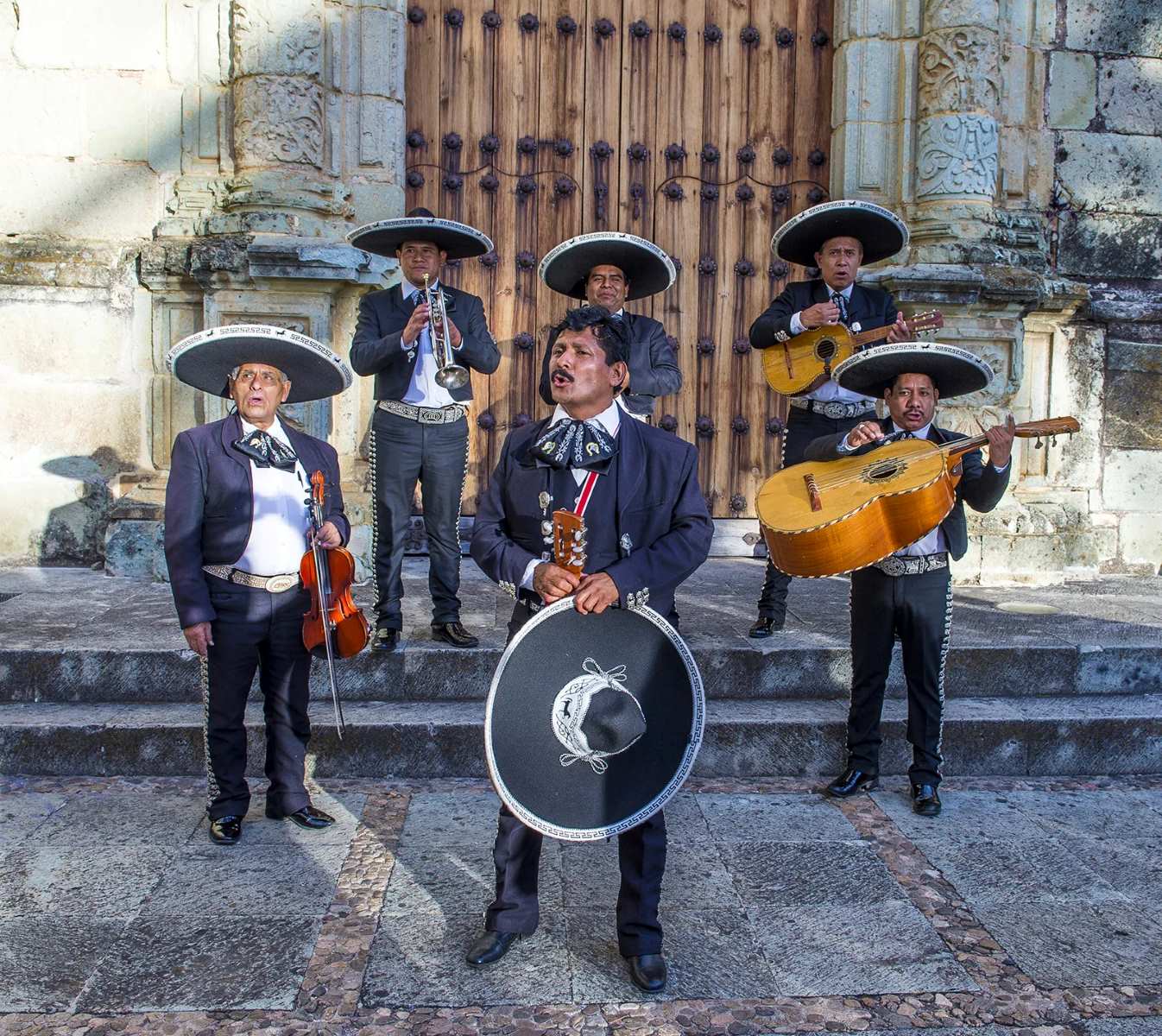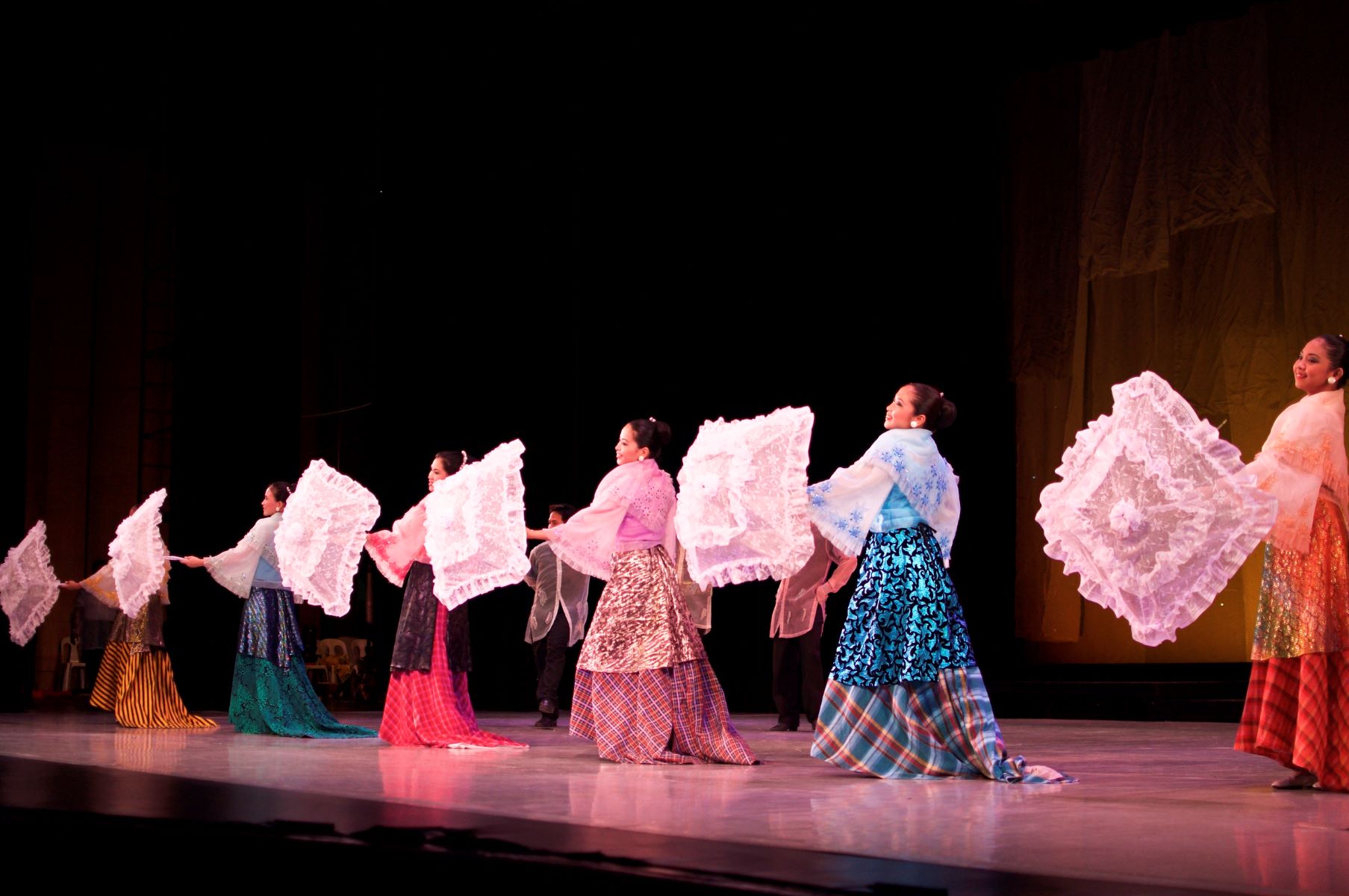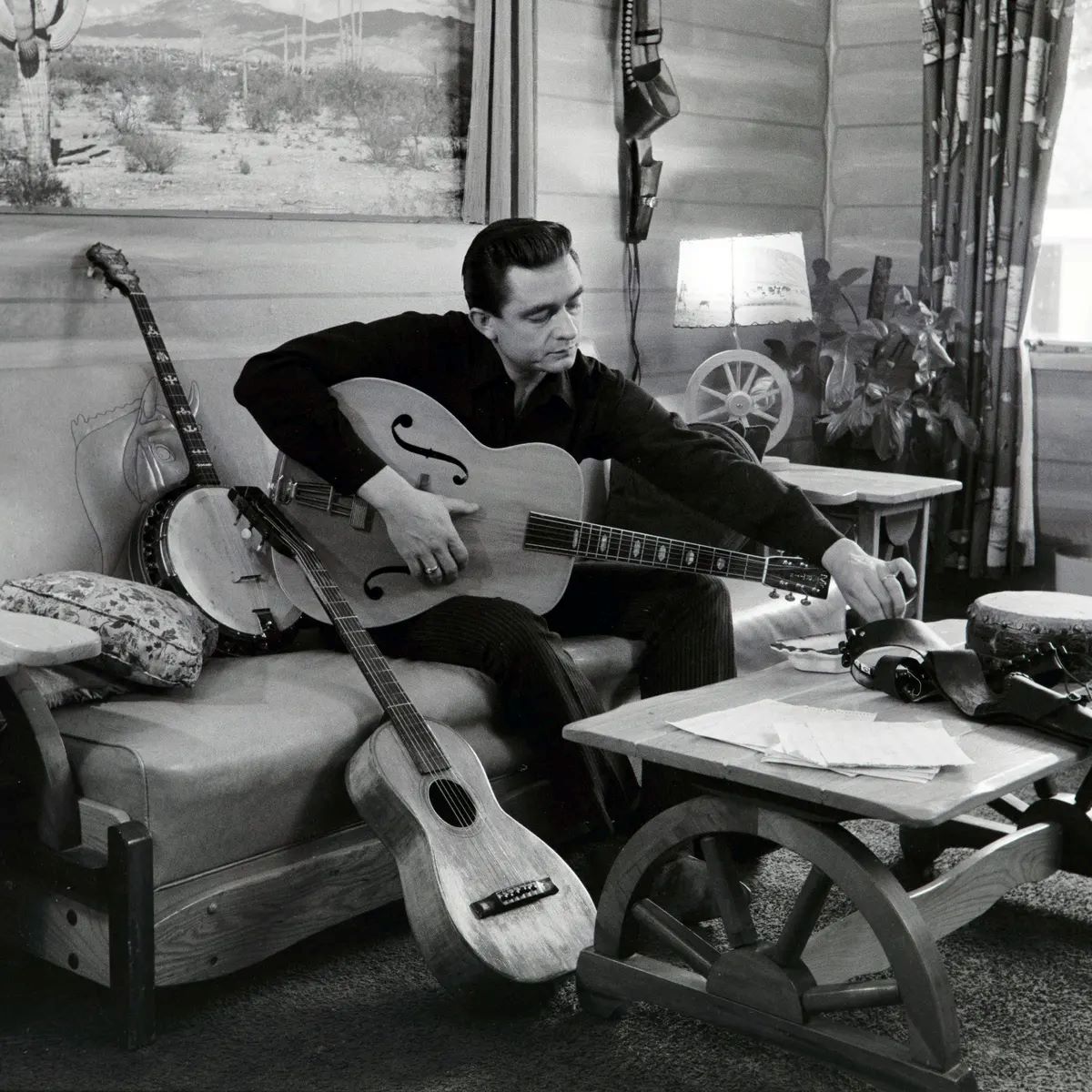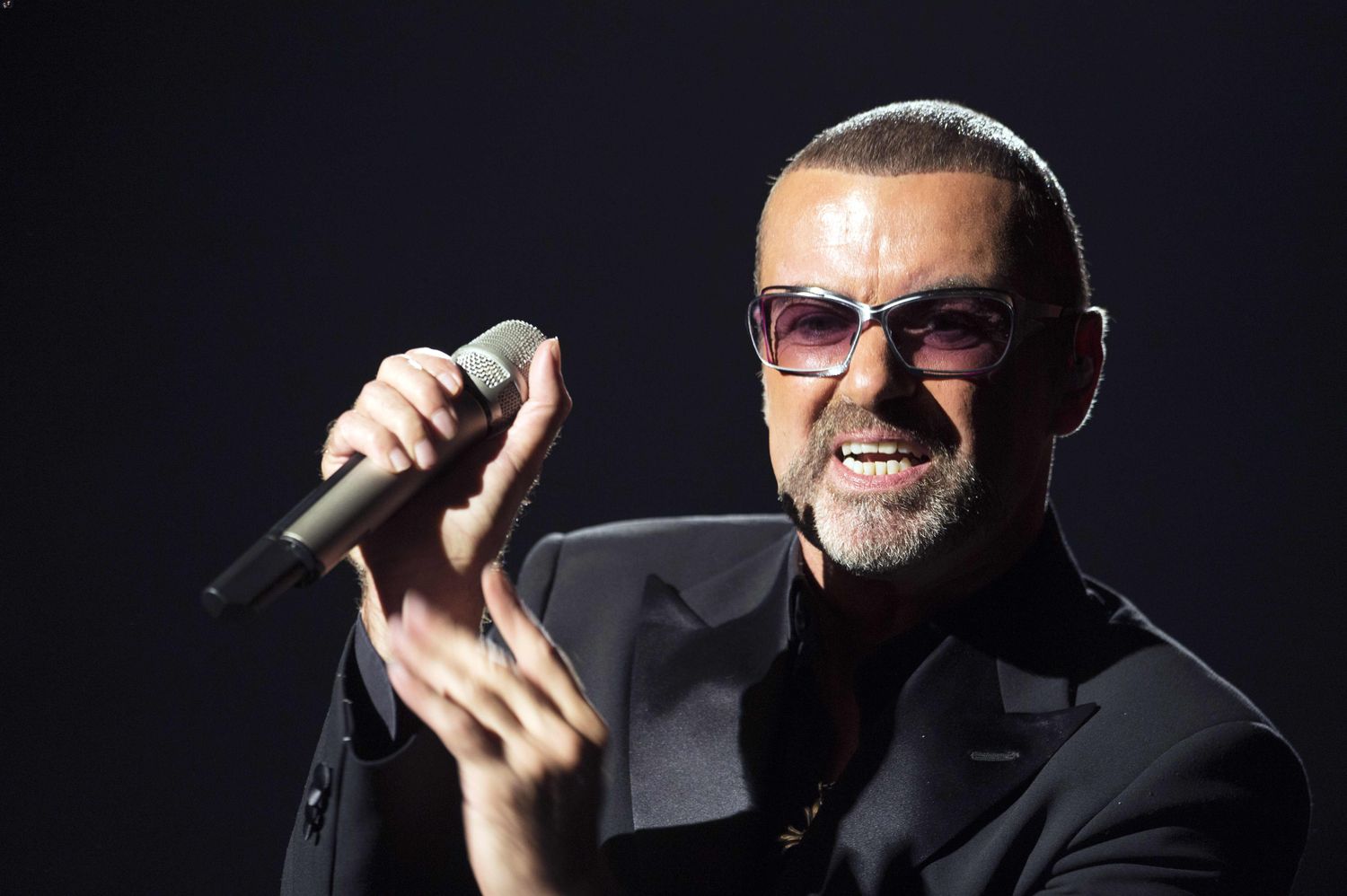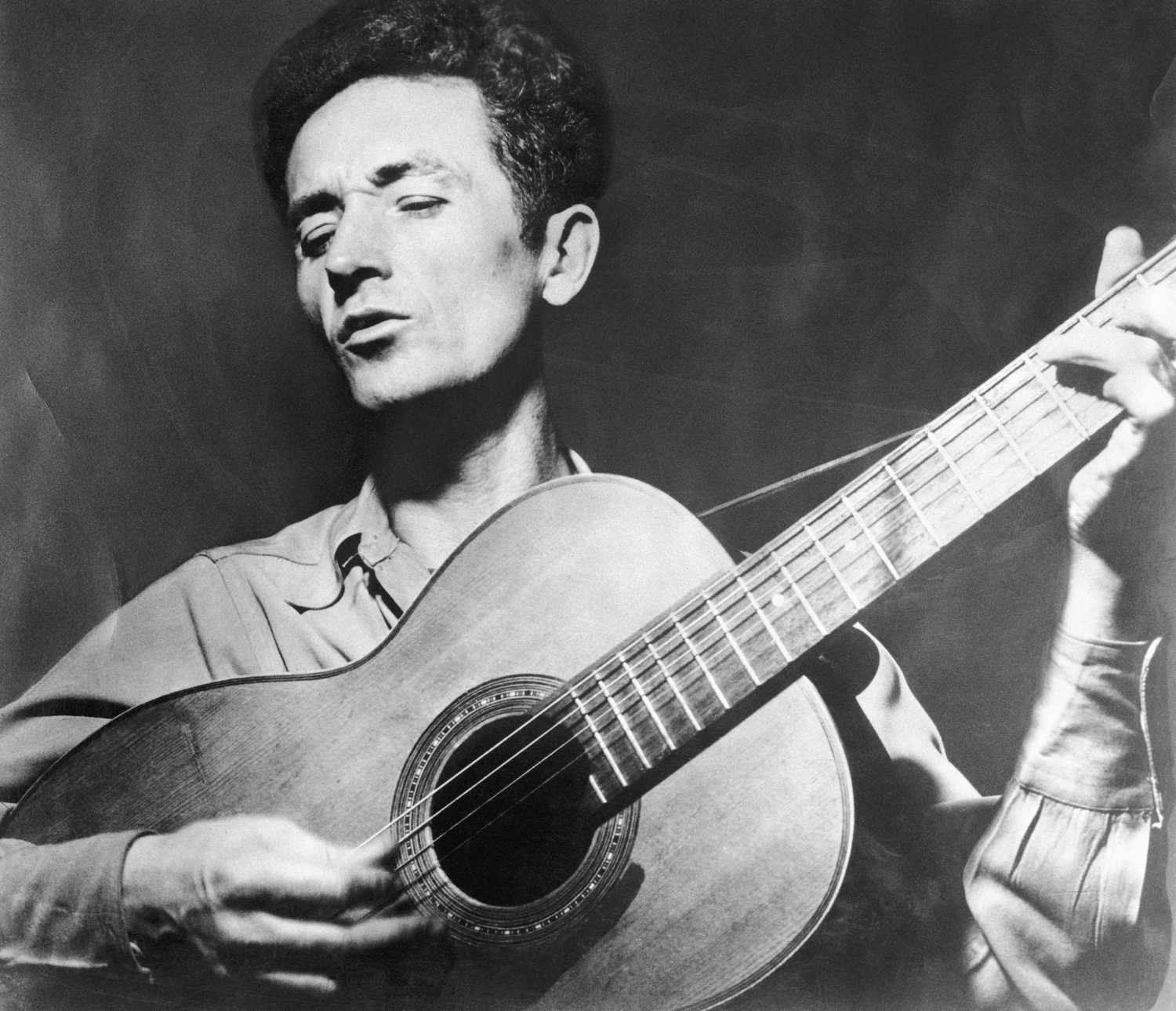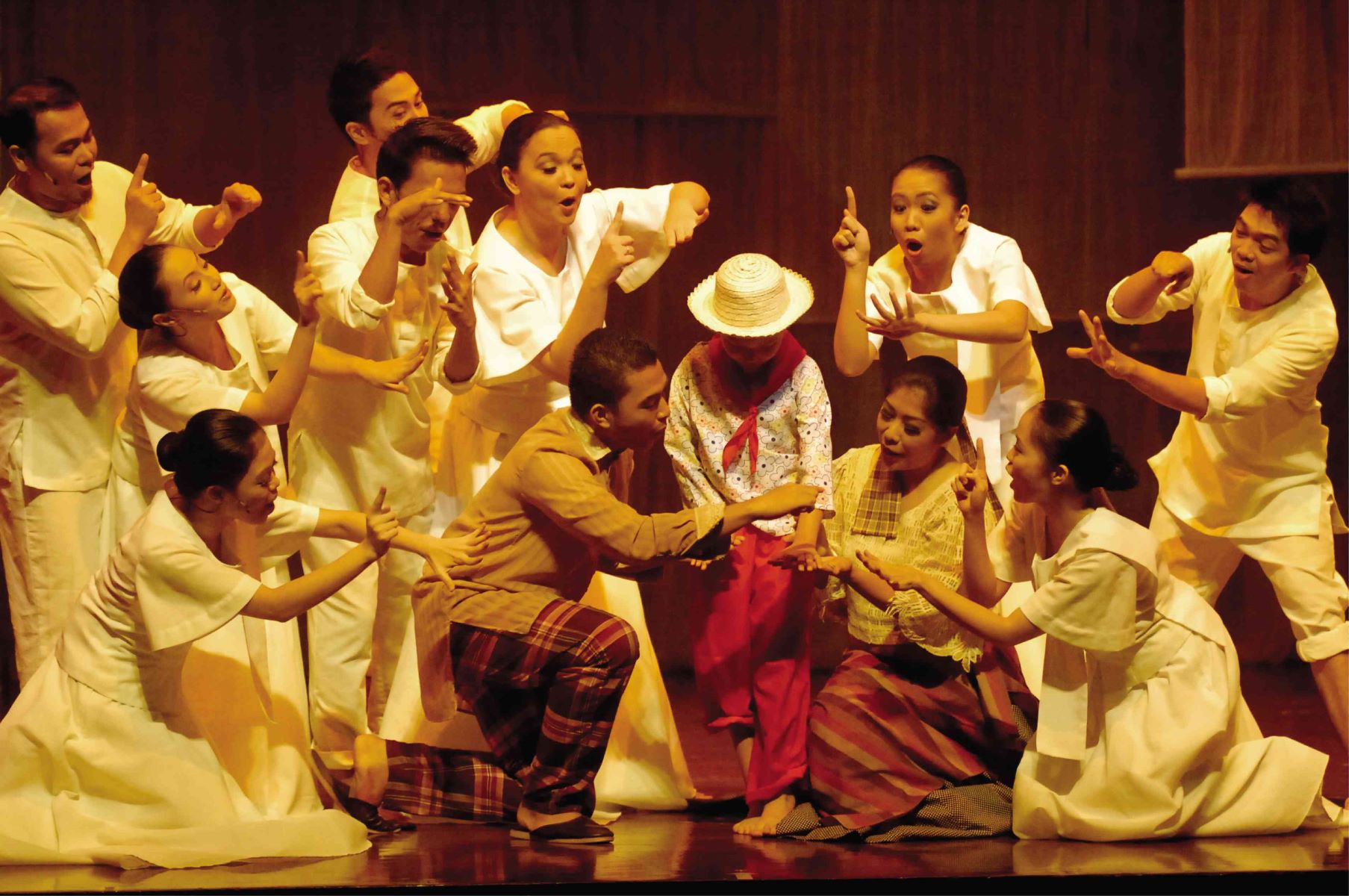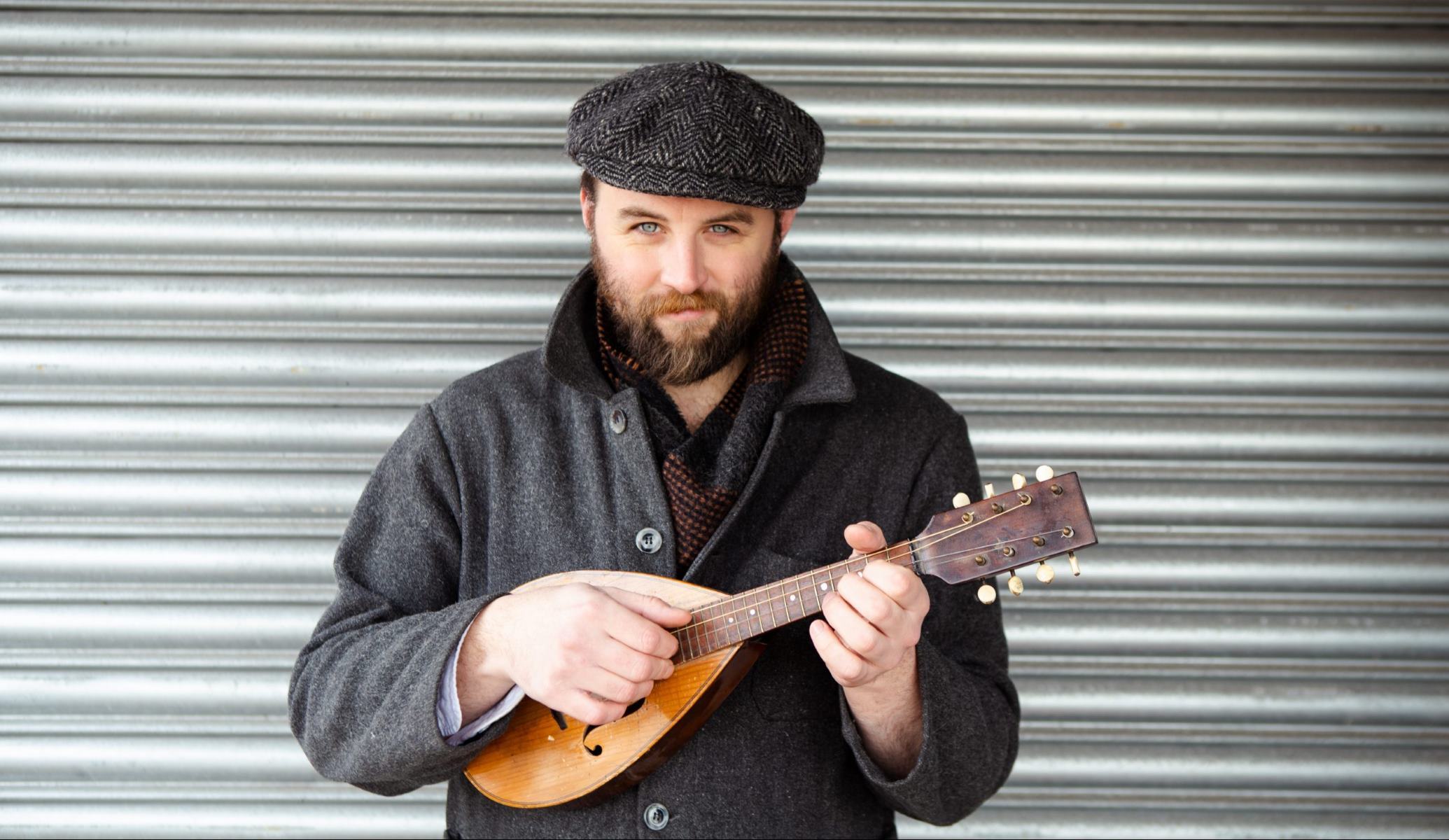

Folk
What Is English Folk Music
Modified: February 15, 2024
Discover the rich history and cultural significance of English Folk Music, exploring its origins, traditions, and distinct characteristics. Uncover the enchanting melodies and lyrical storytelling of this timeless genre.
(Many of the links in this article redirect to a specific reviewed product. Your purchase of these products through affiliate links helps to generate commission for AudioLover.com, at no extra cost. Learn more)
Table of Contents
Introduction
English folk music is a rich and vibrant genre that has deep roots in the traditions and culture of the English people. It encompasses a wide range of musical styles, from ancient ballads and sea shanties to lively jigs and reels. Folk music serves as a portal to the past, allowing us to connect with our ancestors and understand the history of the English people.
This article will delve into the origins of English folk music, the instruments used, the themes and lyrics found in the songs, regional variations, and the influence of this genre on other musical styles. We’ll also explore the revival of English folk music and highlight some notable English folk musicians and bands.
English folk music has evolved over centuries, drawing inspiration from various sources such as rural life, historical events, and even mythology. It reflects the aspirations, struggles, and stories of ordinary people as they navigate through life’s joys and sorrows.
One of the fascinating aspects of English folk music is its ability to transcend generations and maintain relevance in modern times. Whether it’s the haunting melodies of old ballads or the energetic rhythms of dance tunes, English folk music continues to captivate audiences around the world.
So, join us on this musical journey as we explore the enchanting world of English folk music, where tradition meets innovation and history meets the present.
Origins of English Folk Music
The roots of English folk music can be traced back to ancient times, blending elements from various cultures and influences that have shaped the musical landscape of England. It is believed that the indigenous people of prehistoric Britain had their own unique musical traditions, which were likely passed down through generations in an oral tradition.
With the arrival of the Romans in Britain in the 1st century AD, new musical influences were introduced. The Roman occupation brought with it instruments such as the lyre, which had a significant impact on the development of folk music in England.
During the Middle Ages, the influence of the Norman conquest in 1066 and the subsequent establishment of the feudal system further enriched English folk music. Minstrels and troubadours entertained the nobility with their songs and stories, often accompanied by instruments such as the lute and the harp. These musical traditions eventually made their way into the lives of the common people, laying the foundation for the emergence of folk music as a distinct genre.
The English Reformation in the 16th century also played a significant role in shaping the landscape of folk music. As religious upheavals resulted in the widespread destruction of monastic institutions, many musical manuscripts were lost. However, the oral tradition remained resilient, and folk songs continued to be passed down through generations.
It was during the 18th and 19th centuries, known as the folk song revival, that the preservation and collection of traditional English folk songs became a prominent endeavor. Collectors and scholars traveled around the country, documenting and preserving the songs and melodies that had been passed down for generations. The publication of collections such as Thomas Percy’s “Reliques of Ancient English Poetry” and Francis James Child’s “Child Ballads” helped popularize and preserve these traditional songs, ensuring their survival for future generations to enjoy.
English folk music, despite its ancient origins, continues to evolve and adapt to the changing times. It has been influenced by other musical genres such as jazz, blues, and even rock and roll. Today, modern English folk musicians blend traditional elements with contemporary sounds, creating a fusion that is both rooted in tradition and innovative in its approach.
The origins of English folk music are a testament to the resilience and endurance of the musical traditions of the English people. By exploring the rich history and diverse influences that have shaped this genre, we gain a deeper appreciation for the cultural heritage that is woven into the fabric of English folk music.
Instruments Used in English Folk Music
English folk music showcases a wide variety of instruments, each contributing to the unique sound and character of the genre. These instruments range from traditional to modern, reflecting the evolution and adaptability of English folk music over time.
One of the most iconic instruments associated with English folk music is the acoustic guitar. Its melodic versatility and portability make it a staple in folk performances. Guitarists employ a mix of fingerpicking and strumming techniques to create rhythmic accompaniments or intricate melodies that enhance the storytelling nature of folk songs.
The fiddle, a precursor to the modern violin, is another integral instrument in English folk music. Its piercing and emotive sound adds depth and energy to the melodies. Fiddlers often employ techniques such as double stops and slides to create the distinctive ornamentations and embellishments associated with the genre.
The melodeon, also known as the button accordion, is a popular instrument in English folk music, particularly in the 19th-century dance traditions. Its compact size and lightweight nature make it ideal for lively dance tunes. The melodeon’s distinct sound and ability to create complex harmonies contribute to the vibrant and energetic atmosphere of folk music gatherings.
The concertina, a small handheld bellows-driven instrument, is another staple in English folk music. It produces a rich and expressive sound that complements both solo performances and group arrangements. Concertina players often employ intricate finger patterns and bellows techniques to showcase the instrument’s versatility.
Percussion instruments play a crucial role in providing rhythmic accompaniment to folk music. The bodhran, a traditional Irish drum, is commonly used in English folk music to add a driving beat and enhance the lively nature of dance tunes. Other percussive instruments, such as tambourines, spoons, and bones, provide additional textures and rhythms, adding flair to folk performances.
In addition to these traditional instruments, modern English folk musicians incorporate a wide range of instruments from different musical traditions. Mandolins, banjos, bouzoukis, and even electric guitars and keyboards can be found in folk bands, adding diverse timbres and expanding the sonic palette of English folk music.
It is essential to note that the voice is perhaps the most powerful and versatile instrument in English folk music. Singers are at the heart of the genre, breathing life into ancient ballads and storytelling through their emotive interpretations. The distinctive vocal styles, from delicate and haunting to lively and expressive, capture the essence of English folk music and create a deep connection with the listeners.
The instruments used in English folk music not only provide accompaniment but also contribute to the unique identity and character of the genre. From the rustic charm of the fiddle to the rhythmic energy of the guitar and the melodic versatility of the concertina, these instruments bring the stories and melodies of English folk music to life.
Themes and Lyrics in English Folk Music
English folk music is renowned for its evocative storytelling and lyrics that delve into a wide range of themes. The songs often reflect the experiences, emotions, and aspirations of the English people throughout history. From ballads that recount tragic love stories to protest songs that challenge societal norms, the lyrics in English folk music paint a vivid picture of the human condition.
One prevalent theme in English folk music is that of love and romance. Traditional ballads, such as “Greensleeves” and “Barbara Allen,” tell tales of unrequited love, heartbreak, and devotion. These songs capture the poignant emotions associated with love, exploring both the joy and the pain that come with matters of the heart.
Historical events and characters also feature prominently in English folk music. Songs like “The Bonnie Earl o’ Moray” and “The Ballad of John Barleycorn” recount the exploits and struggles of individuals who played a significant role in English history. Through these songs, listeners gain a deeper understanding of the triumphs and tragedies that have shaped the nation.
Work songs and sea shanties are another significant aspect of English folk music. These songs sung by laborers and sailors reflect their daily struggles, endurance, and camaraderie. Whether it’s the rhythmic chanting of sea shanties to coordinate tasks on a ship or the hearty refrains of work songs sung in fields and factories, these lyrics encapsulate the resilience and strength of the working class.
Social and political commentary also find their place in English folk music. From protest songs that challenge injustice and inequality to songs that express solidarity and unity, folk music has been a means of voicing dissent and advocating for change. Songs like “The Diggers’ Song” and “The World Turned Upside Down” reflect the historical struggles of the peasant class and their desire for a fairer society.
Throughout the years, English folk music has often drawn inspiration from nature and the countryside. Songs like “Hal-An-Tow” and “Brigg Fair” celebrate the beauty of the English landscape and the connection between humans and nature. These lyrics capture the rural traditions, agricultural cycles, and the symbiotic relationship between people and the land.
Additionally, many English folk songs contain elements of folklore, mythology, and supernatural themes. These songs often tell tales of mythical creatures, magic, and enchantment, invoking a sense of wonder and imagination. They reflect the mystical and fantastical aspects of English folklore and the deep connections between the natural and supernatural realms.
Themes and lyrics in English folk music not only provide a glimpse into the historical and cultural heritage of the English people but also create a powerful and emotional connection with the listeners. From love and history to work and protest, each song carries its own unique narrative, inviting us to explore the multifaceted nature of the human experience.
Regional Variations in English Folk Music
English folk music is a diverse genre, with distinct regional variations that reflect the unique cultural identities and traditions of different parts of England. These regional variations not only showcase the rich musical heritage of specific areas but also contribute to the overall tapestry of English folk music.
One of the most well-known regional variations is the folk music of the Northumbrian region. This area, located in the northeastern part of England, has a strong tradition of ballad singing and instrumental music. The Northumbrian smallpipes, a type of bagpipes specific to the region, are a key feature of the local folk music, producing a distinct and haunting sound.
The West Country, encompassing counties such as Cornwall, Devon, Dorset, and Somerset, has its own unique folk music traditions. The music of this region often incorporates lively dance tunes, such as jigs and reels, and features instruments like the concertina and fiddle. The songs and tunes of the West Country reflect the maritime heritage, rural life, and local customs of the area.
The East Anglian region, known for its rich agricultural traditions, has a distinct style of folk music characterized by lively dance tunes and storytelling ballads. The melodeon and fiddle are commonly used instruments in this area, adding a vibrant and energetic element to the music.
Yorkshire, in the north of England, has its own unique folk music traditions shaped by its industrial history and strong sense of community. Songs like “On Ilkla Moor Baht ‘at” and “Scarborough Fair” have become synonymous with the region. The music often reflects the working-class culture, mining heritage, and the rugged landscapes of Yorkshire.
The folk music of the Midlands, which includes counties like Staffordshire, Nottinghamshire, and Warwickshire, features a mix of vocal harmonies, lively dance tunes, and storytelling ballads. The region has a strong history of traditional dance, with Morris dancing being a prominent part of the local folk culture.
London and the Southeast have their own vibrant folk music scene, influenced by the diverse cultural tapestry of the capital city. The music of this region often blends traditional English folk elements with influences from different cultures, creating a unique fusion of sounds and styles.
These are just a few examples of the regional variations in English folk music. Each area within England has its own folk traditions, influenced by local history, geography, and cultural heritage. Exploring these regional variations offers a deeper understanding of the diverse tapestry of English folk music, showcasing the richness and variety within the genre.
Despite these regional differences, there are also common threads that unite English folk music as a whole. The themes of love, history, and social commentary transcend regional boundaries, ensuring that the essence of English folk music is kept alive and celebrated throughout the country.
Influence of English Folk Music on Other Genres
English folk music has had a profound impact on numerous musical genres, both within England and around the world. The roots of this influential genre have intertwined with various styles, leading to the emergence of new sounds and innovative musical expressions. From the traditional folk revival of the mid-20th century to modern adaptations, the influence of English folk music continues to resonate across the musical landscape.
One of the genres heavily influenced by English folk music is the American folk music movement of the 20th century. English folk ballads and storytelling traditions were brought to the United States by early settlers and immigrants. These songs, infused with the spirit of hardship, longing, and resilience, formed the foundation of American folk music, influencing artists such as Bob Dylan, Joan Baez, and Pete Seeger.
English folk music also played a significant role in the development of British rock and popular music from the 1960s onwards. Bands like Fairport Convention and Steeleye Span fused traditional folk elements with rock instrumentation, creating a subgenre known as folk rock. These bands, along with artists like Richard Thompson and Sandy Denny, brought renewed attention to English folk music and inspired a new generation of musicians.
The influence of English folk music extends beyond the realm of traditional and folk-inspired genres. It has served as a source of inspiration for artists experimenting with fusion and world music. Bands like Bellowhead and Eliza Carthy & The Wayward Band have incorporated eclectic musical styles, from jazz to reggae, into their interpretations of English folk songs, pushing the boundaries of the genre and attracting a diverse audience.
Outside of the English-speaking world, English folk music has found resonance in various international musical traditions. Artists from countries like Sweden, Finland, and the Netherlands have embraced English folk melodies and storytelling techniques in their own folk music, creating a cross-cultural exchange that enriches both genres.
Even within England, the influence of English folk music can be heard in contemporary singer-songwriter movements. Artists such as Laura Marling, Seth Lakeman, and Kate Rusby draw inspiration from the storytelling and lyrical depth of English folk music, infusing it with their unique styles and perspectives.
The enduring legacy of English folk music lies in its ability to inspire and influence artists across diverse genres and cultural boundaries. Whether it’s the raw emotion of the traditional ballads or the infectious energy of the dance tunes, the melodies and themes of English folk music continue to captivate and inspire musicians around the world, ensuring its timeless presence in the global musical landscape.
Revival of English Folk Music
The mid-20th century marked a significant revival of interest in English folk music, which had been gradually fading into obscurity. This revival, sparked by a renewed appreciation for traditional music and a desire to preserve cultural heritage, brought English folk music back into the mainstream and revitalized the genre.
In the post-World War II era, a group of musicians and enthusiasts, known as the “folk revivalists,” began to actively collect and perform traditional English folk songs. They sought out older singers and musicians, recording their songs and spreading the word about this rich musical heritage.
One of the key figures in the revival of English folk music was Ewan MacColl, a Scottish singer-songwriter, who, along with his partner Peggy Seeger, played a pivotal role in promoting traditional songs and engaging with working-class communities. Their influential radio programs and albums helped popularize English folk music and introduced it to a wider audience.
Another significant driving force behind the revival was the formation of folk clubs. These grassroots venues provided a platform for musicians and enthusiasts to gather, perform, and share traditional songs. The folk club movement grew rapidly, fostering a sense of community among folk musicians and allowing the genre to flourish.
The establishment of influential folk record labels, such as Topic Records and Transatlantic Records, played a crucial role in promoting and distributing English folk music. These labels released albums by both traditional and contemporary folk artists, ensuring the accessibility and preservation of a wide range of folk songs.
As the folk revival gained momentum, it also led to innovative collaborations and the blending of traditional folk music with other genres. Musicians like Fairport Convention, Steeleye Span, and Pentangle experimented with folk rock, infusing traditional songs with electric instrumentation and contemporary arrangements. This fusion of old and new elements helped bridge the gap between past and present, attracting a younger audience and revitalizing the genre.
Today, the revival of English folk music continues to thrive, with a new generation of artists and enthusiasts carrying on the tradition. Festivals dedicated to folk music, such as the Cambridge Folk Festival and the Sidmouth Folk Festival, provide platforms for both seasoned performers and emerging talent to showcase their skills.
The internet and digital platforms have also played a significant role in the revival, making it easier for people to access and discover English folk music. Online communities, social media groups, and streaming services have created new avenues for sharing and promoting traditional songs, ensuring that the genre remains relevant and accessible to audiences around the world.
The revival of English folk music has not only preserved and revitalized a rich cultural heritage but has also inspired new generations of musicians to explore, reinterpret, and innovate within the genre. It continues to be celebrated as a vibrant and vital part of England’s musical legacy, bridging the gap between the past and the present.
Notable English Folk Musicians and Bands
English folk music has been shaped by numerous talented musicians and bands who have made significant contributions to the genre. These artists have not only preserved traditional songs but also pushed the boundaries, incorporating new sounds and inspiring future generations. Here are a few notable English folk musicians and bands:
1. Martin Carthy: Known for his virtuosic guitar playing and distinctive vocals, Martin Carthy has been a leading figure in the English folk revival. His interpretations of traditional songs, such as “Scarborough Fair” and “Lord Franklin,” have become iconic within the genre.
2. Eliza Carthy: The daughter of Martin Carthy and Norma Waterson, Eliza Carthy is a powerhouse musician in her own right. With her signature fiddle playing and powerful vocal delivery, she pushes the boundaries of folk music, combining tradition with innovative arrangements.
3. Fairport Convention: Formed in the late 1960s, Fairport Convention is one of the most influential folk rock bands in England. They fused traditional folk songs with elements of rock, creating a distinct sound that inspired a generation. Their album “Liege & Lief” is widely regarded as a seminal folk rock release.
4. Steeleye Span: Another pioneering folk rock band, Steeleye Span brought traditional English folk songs into the mainstream. With their unique vocal harmonies and electrified arrangements, songs like “Gaudete” and “All Around My Hat” became chart hits, introducing a new audience to English folk music.
5. Kate Rusby: Known for her pure and emotive vocals, Kate Rusby has become one of the most celebrated contemporary folk singers. Her interpretations of traditional songs and her own compositions have garnered critical acclaim, earning her a devoted following both in the folk world and beyond.
6. Bellowhead: This critically acclaimed folk big band embraced the energetic and lively side of English folk music. With their brass section, accordion, and multiple vocalists, Bellowhead brought a contemporary twist to traditional dance tunes, captivating audiences with their exuberant live performances.
7. Lau: The innovative trio of Kris Drever, Martin Green, and Aidan O’Rourke, known collectively as Lau, pushes the boundaries of folk music with their experimental soundscapes. Their virtuosic musicianship and creative approach have earned them numerous awards and accolades.
8. Jon Boden: As a former member of Bellowhead, Jon Boden is a respected singer, fiddler, and songwriter. His solo work delves into traditional English folk songs and original compositions, incorporating various musical influences to create a unique and modern folk sound.
9. The Unthanks: The Unthanks, led by sisters Rachel and Becky Unthank, explore the folk traditions of Northumberland with their atmospheric and ethereal sound. Their haunting vocals and stripped-down arrangements bring a fresh and contemporary perspective to traditional songs.
10. Sam Lee: Known for his dedication to collecting and revitalizing traditional songs, Sam Lee is a passionate advocate for English folk music. With his deep, resonant voice and innovative arrangements, he bridges the gap between past and present, breathing new life into ancient songs.
This is just a glimpse into the rich tapestry of English folk musicians and bands. Each artist and group brings their own unique style and interpretation, contributing to the ongoing legacy of English folk music and keeping the genre alive and thriving.
Conclusion
English folk music is a treasure trove of cultural heritage, storytelling, and musical expression. Its origins can be traced back through centuries of tradition, reflecting the lives, experiences, and aspirations of the English people. From ancient ballads to lively dance tunes, the genre embodies the spirit, resilience, and creativity of a nation.
Throughout history, English folk music has experienced both periods of decline and revival, but its enduring allure remains. The folk revival of the mid-20th century breathed new life into traditional songs, inspiring subsequent generations to explore, reinterpret, and innovate within the genre.
The influence of English folk music transcends boundaries, reaching far beyond the shores of England. Its impact can be heard in American folk music, British rock, fusion genres, and even international folk traditions. Its themes and melodies continue to resonate with the human experience, connecting listeners to the past while remaining relevant in the present.
Notable English folk musicians and bands have played a crucial role in preserving and evolving the genre. Their contributions have enriched the music with diverse sounds, innovative arrangements, and powerful interpretations. These artists, both past and present, have ensured that English folk music thrives, captivating audiences and inspiring future generations.
English folk music is a vibrant art form that celebrates the heritage, culture, and stories of the English people. It weaves a rich tapestry of themes, from love and history to social commentary and nature, creating a deeply emotional and immersive experience for both performers and listeners.
As we delve into the enchanting world of English folk music, we discover a genre that transcends time and place. It invites us to connect with our roots, appreciate the beauty and diversity of our musical heritage, and embrace the power of storytelling through melody and lyrics.
So, let us raise our voices and instruments in celebration of English folk music, a living tradition that continues to captivate, inspire, and unite people across generations and cultures.

